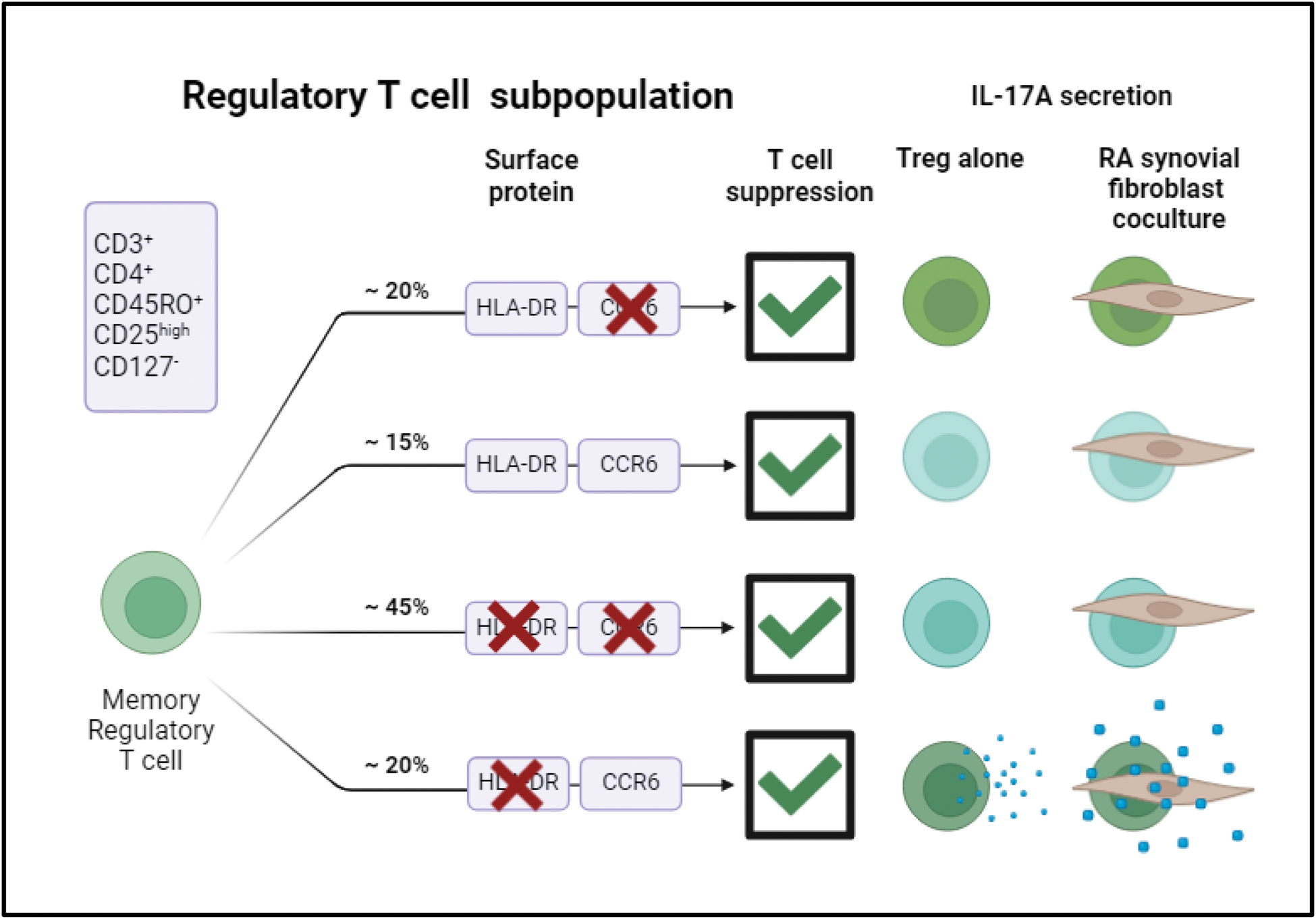

Background: Regulatory T cells (Tregs) are essential for maintaining immune tolerance and limiting excessive immune responses. However, Tregs show high levels of heterogeneity and plasticity, indicated by the production of IL-17A. In rheumatoid arthritis (RA), IL-17A intensifies synovial inflammation by activating synovial fibroblasts. Identification and characterization of Treg subpopulations can elucidate their role in synovial inflammation.
Objectives: We aim to characterise Treg heterogeneity in RA patients and to examine their functional characteristics and role in synovial inflammation.
Methods: CITE-seq was applied to T cells from four treatment-naïve RA patients and four healthy controls. Unsupervised clustering was performed to identify Treg subpopulations. These subpopulations were verified in PBMCs from 150 RA patients and 30 healthy controls using flow cytometry. A suppression assay was conducted to evaluate the suppressive capacity of the sorted Treg subpopulations. In addition, the cytokine-secreting potential of sorted Treg subpopulations was investigated using ELISA, as well as the effect of interaction with RA synovial fibroblasts on cytokine secretion.
Results: CITE-seq analysis from treatment-naïve early RA patients identified Treg subpopulations based on the presence of HLA-DR and CCR6. We verified the surface expression of HLA-DR and CCR6 on Tregs in PBMCs of patients with established RA, revealing a significant decrease in HLA-DR - CCR6 + Treg cells in RA patients compared to healthy individuals. Significantly fewer HLA-DR - CCR6 + Tregs were detected specifically in RA patients with moderate and severe disease activity. We analysed suppressive function, cytokine secretion, and fibroblast interaction to investigate the functional differences between these subpopulations. We found that all Treg subpopulations suppress proliferation of CD4 + responder cells. In addition, we revealed that activated HLA-DR - CCR6 + Treg exclusively secreted IL-17A. Co-cultures with RA synovial fibroblasts showed that HLA-DR - CCR6 + Tregs induced synovial fibroblast activation, indicated by the secretion of IL-6, IL-8, and MMP-3. Interestingly, IL-17A secretion was increased upon coculturing HLA-DR - CCR6 + Treg and synovial fibroblast, highlighting the potential plasticity of this HLA-DR - CCR6 + Treg subpopulation towards a proinflammatory phenotype.
Conclusion: Treg subpopulations based on HLA-DR and CCR6 were detected in early and established RA patients, showing heterogeneity in cytokine secretion but were all suppressive on T cell proliferation. The HLA-DR - CCR6 + Treg population showed pro-inflammatory characteristics, acting like a double-edged sword, activating synovial fibroblasts and secreting IL-17A.
Schematic overview of Treg subpopulation characteristics

REFERENCES: NIL.
Acknowledgements: NIL.
Disclosure of Interests: Bennie van Heeswijk: None declared, Margot Bongenaar: None declared, Nadine Davelaar: None declared, Pascal H.P. de Jong: None declared, Radboud J.E.M. Dolhain UCB, Roche, Abbvie, Genzyme, Novartis, Astra Zeneca, Eli Lily, unrestricted research grants from: Dutch Arthritis Association, ZonMw, UCB Pharma, Galapagos, Hannah den Braanker: None declared, Erik Lubberts: None declared.
© The Authors 2025. This abstract is an open access article published in Annals of Rheumatic Diseases under the CC BY-NC-ND license (